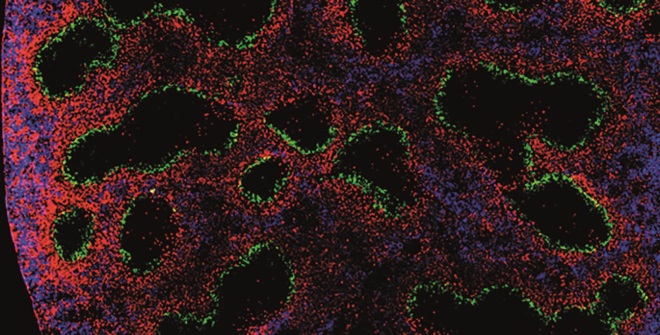
Source: Napier RJ, Norris BA, Swimm A et al. / PLoS Pathogens 2015
Researchers treated mice with imatinib then stained sections of their spleens to identify macrophages (green), myeloid cells (blue) and neutrophils and monocytes (red)
Imatinib mesylate (Glivec) is used as an anticancer drug but it also has activity against bacteria and viruses, acting on cellular mechanisms used by pathogens to move into, through or out of cells.
According to research reported in PLoS Pathogens
[1]
on 30 March 2015, imatinib at very low doses mimics a physiological innate response to infection in the bone marrow. Called the “emergency response”, it causes haematopoietic stem cells and multipotent progenitors to expand and differentiate into mature myeloid cells that migrate to peripheral sites.
“Mimicking a physiological antimicrobial response may make imatinib broadly useful,” say the researchers. “Thus, potentiation of the immune response by imatinib at low doses may facilitate clearance of diverse microbial pathogens.”


